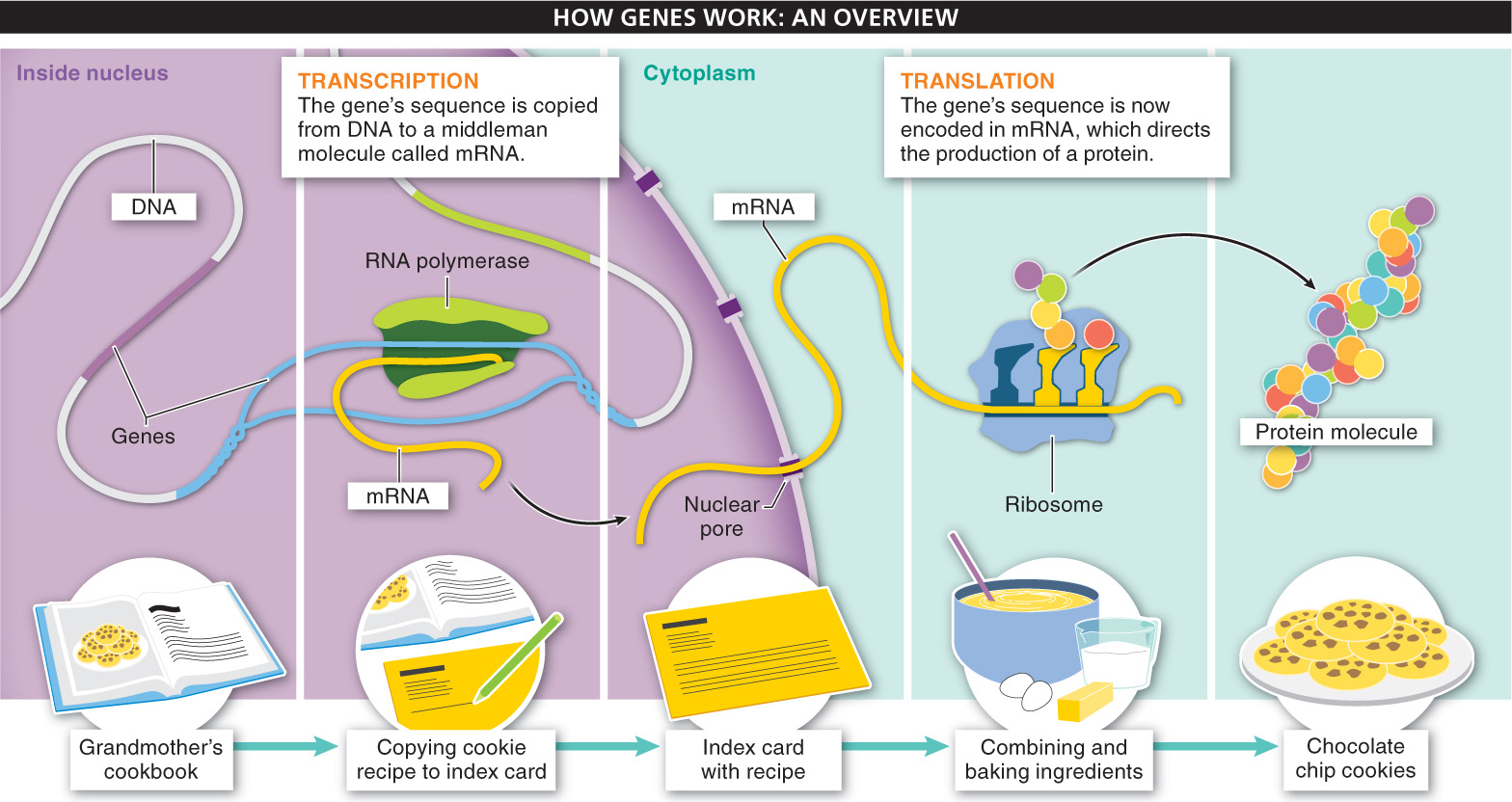5.5: How do genes work? An overview.
Just as having a recipe for chocolate chip cookies is not the same thing as having the actual cookies, having a wealth of hereditary information about how to build muscle cells or leaf cells is not sufficient to produce an organism. Think about it: an organism’s every cell contains all of the information needed to manufacture every protein in its body. This means that the skin cells on your arm contain the genes for producing proteins found only in liver cells or red blood cells or muscle tissue—
The genes in strands of DNA are a storehouse of information, an instruction book, but they are only one part of the process by which an organism is built. If the genes that an organism carries for a particular trait—
187
How does a gene (a sequence of bases in a section of DNA) affect a flower’s color or the shape of a nose or the texture of a dog’s fur (the phenotype)? The process occurs in two main steps: transcription, in which a copy of a gene’s base sequence is made, and translation, in which that copy is used to direct the production of a polypeptide, which then, in response to a variety of factors, including the cellular environment, folds into a functional protein.
FIGURE 5-11 presents an overview of the processes of transcription and translation. In transcription, which in eukaryotes occurs in the nucleus, the gene’s base sequence, or code, is copied into a middleman molecule called messenger RNA (mRNA). (Because prokaryotes don’t have a nucleus, transcription occurs in the cytoplasm.) This is like copying the information for the chocolate chip cookie recipe out of the cookbook and onto an index card. The mRNA then moves out of the nucleus into the cytoplasm, where translation allows the messages encoded in the mRNA to be used to build proteins.

TAKE-HOME MESSAGE 5.5
The genes in strands of DNA are a storehouse of information, an instruction book. The process by which this information is used to build an organism occurs in two main steps: transcription, in which a copy of a gene’s base sequence is made, and translation, in which that copy is used to direct the production of a polypeptide.
Name and describe in a single sentence the two main steps in the expression of a gene.
188